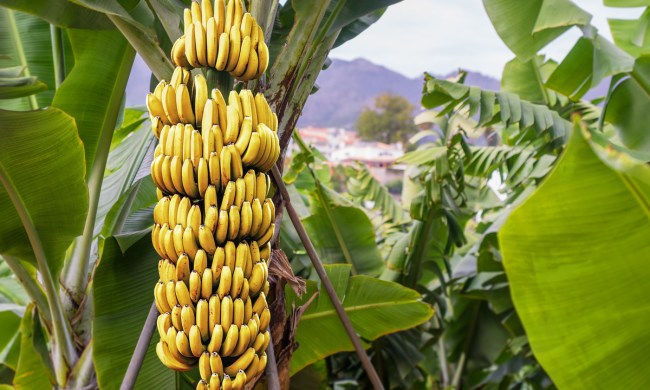Mushrooms are delicious, versatile in meals, and packed with nutrients, which makes them a very appealing addition to practically any garden. However, mushrooms are fungi, not plants like vegetables or fruit. This can make them seem more intimidating, but they’re actually easy to grow once you get the hang of it. To help you get started, here’s a list of seven easy to grow mushrooms that you can grow at home, how to care for them, and some of the best ways to use them.
Button mushrooms
Button mushrooms are some of the easiest mushrooms to begin with, for a few key reasons. Firstly, they can grow in total darkness, so they can be grown under a bed, in a closet, or in your basement. They’re also low maintenance. All they need is a high nitrogen substrate (horse manure or a mix of manure and compost are the most common ones) to grow in and consistent moisture. They grow vertically as well, meaning they can be grown in a box rather than in a special grow bag. Finally, button mushrooms are the juvenile stage of both cremini and portobello mushrooms, which increases the variety of uses.

Shiitake mushrooms
Shiitake mushrooms are a little more difficult to grow than button mushrooms, mainly because they take longer to grow, but most gardeners find their delicious flavor well worth the wait. They need a woody substrate, as shiitake mushrooms naturally grow on decomposing logs. You can grow shiitake mushrooms on a log, on a sawdust block, or in sawdust pellets. If you choose logs, try to get them as fresh as possible, to avoid growing other fungi alongside your shiitakes. Although they need to be kept in the dark until it’s time for them to start fruiting, shiitakes can actually be grown outdoors as well.

Maitake mushrooms
Maitake mushrooms are also called hen of the woods, and they’re a favorite of foragers. They can grow quite large, which adds to its versatility. However, they have a strong, earthy flavor which can easily overpower subtler flavors. Maitake mushrooms typically grow at the base of oak trees and prefer damp conditions. Grow your hen of the woods in a wood (preferably oak) substrate, and keep it moist.

Oyster mushrooms
Oyster mushrooms are another mushroom that is commonly recommended to beginners. They’ll grow in almost any substrate, although a few common ones are sawdust, straw, and cardboard. The only thing oyster mushrooms are truly picky about is moisture levels. They need consistent moisture, so be sure to have a spray bottle on hand to mist them. They also grow horizontally, so you’ll need a bucket or grow bag. Oyster mushrooms have a subtle, savory flavor and are best eaten sautéed or even fried. One benefit to oyster mushrooms is how many different varieties of oyster mushroom there are.

Enoki mushrooms
Enoki mushrooms are an interesting choice because they fruit in winter. This, combined with how little light they need to grow, make them great options if you’re looking for an easy mushroom to grow in your cellar or basement. Like shiitake mushrooms, enoki grow on decomposing logs in the wild, so you’ll need a wood substrate. Due to their small size, enoki are easy to overcook. They work well in soups, and can be eaten raw as a snack or as part of a salad.

Wine cap mushrooms
Wine cap mushrooms are unique on this list in that they grow better outdoors, in sunny areas. You can grow them in wood chips, straw, or a mixture of both, and you might want to consider creating a raised bed for them. Wine cap mushrooms also have a unique flavor and taste slightly nutty. In cooking, they’re very versatile, working well in rice dishes, soups, and sauces, and can be sautéed, grilled, or stuffed.

Lion’s mane mushrooms
Lion’s mane mushrooms have a distinctive appearance. They grow quite large and have long tendrils that drape across them. They’re well known for their slightly sweet flavor, which is sometimes compared to crab or lobster. This makes them a great meat substitute in seafood dishes. Lion’s mane mushrooms can be grown on logs or in grow bags, but grow much more slowly on logs. It’s important to note that although lion’s mane is not too difficult to grow, it can be tricky for beginners to get the timing right. If you’ve already grown one of the other mushrooms on this list, though, then you should do just fine with lion’s mane.
Any of these seven mushrooms would make a great addition to your meals, and, as most gardeners will tell you, things taste better when you grow them yourself! Use this simple guide to pick your mushroom variety or varieties, and soon you’ll be a mushroom growing pro. If you’re feeling a little nervous about starting, you can always buy a mushroom growing kit to get you started. Either way, we hope you have a fun time with your fungi.



